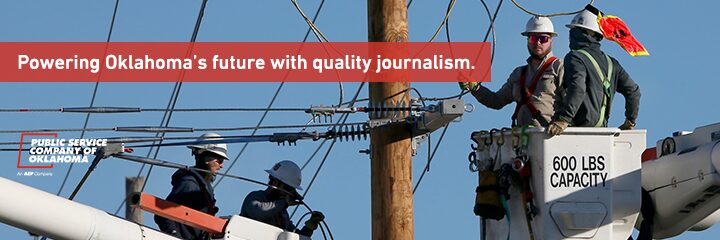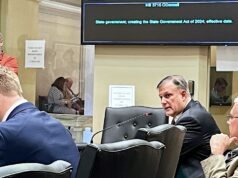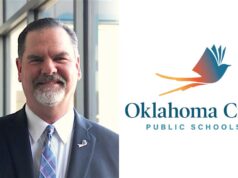
Oklahoma’s growing failures in school funding and social welfare were recently showcased across two in-depth National Public Radio reports. Both are warnings to the rest of the country, revealing what happens when states take the route pioneered by Kansas, Michigan and Oklahoma, all of which have deliberately starved their governmental services. Each posits the question: How low can Oklahoma go?
KOSU’s Emily Wendler and WBUR’s Tom Ashbrook led the 48-minute discussion, Public School Funding at a Loss, in Oklahoma and Elsewhere, Nov. 30 on NPR’s On Point. They started with Oklahoma because it spends about $3,000 per student less than the national average, and it has cut funding more than any other state.
Ashbrook explained:
“Oklahoma public schools are on the ropes after years of budget cuts. Four-day school weeks and more. We’ll take it as a big case study and look at Donald Trump’s new education secretary.”
After Wendler’s overview of the state’s budget crisis and the defeat of SQ 779, which would have raised teacher salaries, former-Grant H.S. teacher and newly elected state Rep. Mickey Dollens (D-OKC) explained how he and others lost their jobs due to budget cuts. Callers weighed in with the predictable argument that teachers need a raise, but the Legislature and the governor should be held responsible for funding education in a rational way.
Claims about school funding divorced from reality
Former Republican Gov. Frank Keating chimed in, too, repeating claims that are completely divorced from reality about administrative costs. While indicating that it should be “easy” to fix our school budget, Keating repeated the false claim that only 40 percent of SQ 779’s proposed fundraising would have gone to teachers.
At first, I thought Keating merely misspoke when he called for school consolidation and said that most school spending goes to administration. Then he described a system he visited in the 1990s that supposedly spent 80 percent of its budget on administration. And then he closed the interview saying that 60 percent or even more of school spending goes to administration.
Dollens set Keating straight on consolidation, and the widely admired Rutgers University professor Bruce Baker corrected the former governor on overall administrative costs. Baker also noted that the increase in charter schools has contributed to the increase in administrative costs.
By the way, Oklahoma Watch and the Oklahoma Policy Institute have punched holes in the argument that “bloated administration” is a major part of Oklahoma’s financial problem. They have shown that the reduction of Oklahoma’s administrative costs through consolidation to the lowest level in the nation would reduce spending from its current level, 3.2 percent, and if all of the savings went to the classroom, “Oklahoma would move up only one spot, to fourth from last, in classroom spending per student.” (Administration accounts for only 2.5 percent of the OKCPS budget.)
Both Keating and the other guest, the Fordham Institute’s Mike Petrilli, are linked to Betsy DeVos’ school privatization network. Keating advised DeVos’ “Right to Work” campaign in Michigan, and, since the election, Fordham’s longstanding connections to DeVos’ money have been strengthened. As Petrilli personally protests the Trump election, his organization has strengthened its ties to DeVos’ “partners” — such as the national union-busting organization known as The 74. Petrilli repeated the perennial soundbite that DeVos’ extreme push for vouchers, unregulated virtual schools and for-profit as well as “public” charters could work and could help Oklahoma.
Welfare reform, the cousin to corporate school reform
That is a great lead-in to NPR’s Reveal feature and its investigation of how welfare reform, the cousin of corporate school reform, has shifted investments from the poorest Oklahomans to affluent young or middle-aged professionals as well as contractors offering dubious services. As with the education sector, NPR began with Oklahoma’s extreme experience as the first step in a national study:
Reporter Krissy Clark’s first stop in a national survey was in Oklahoma, where until recently, welfare dollars paid for marriage and relationship classes – no matter the couples’ income levels.
The relationships expert, teaching a free class called Forever. For Real, pointed “at a slide with the image of a big colorful heart on it. The heart’s divided up in the quadrants, labeled with different love styles.” When a biotech professional and his fiancée, a paralegal, learned how the class was funded, he said, “Oh my God, we’re on welfare.”
NPR reported in its Reveal piece:
In 2014, Oklahoma spent almost $200 Million of TANF money; promoting marriage and preventing out of wedlock pregnancy, accounted for about 5 percent of that spending. Just a little more, 9 percent went to cash assistance for poor families, what we think of, when we think of welfare.
Reveal then moved on to DeVos’ Michigan to see how that state diverted welfare money from its proper recipients. Michigan diverts $100 million of its $700 million TANF (welfare) block grants toward scholarships for students whose families earn up to $100,000 per year.
How low can Oklahoma go?
Reveal began its story with the note, “With Republicans in full control of the federal government, there’s a good chance welfare reform will be an issue they make take on.”
There is an even better chance, I would add, that Trump supporters and funders will seek to impose Oklahoma’s education and social-welfare policies on the rest of the nation, so we can look forward to more reports on how low Oklahoma can go.






















